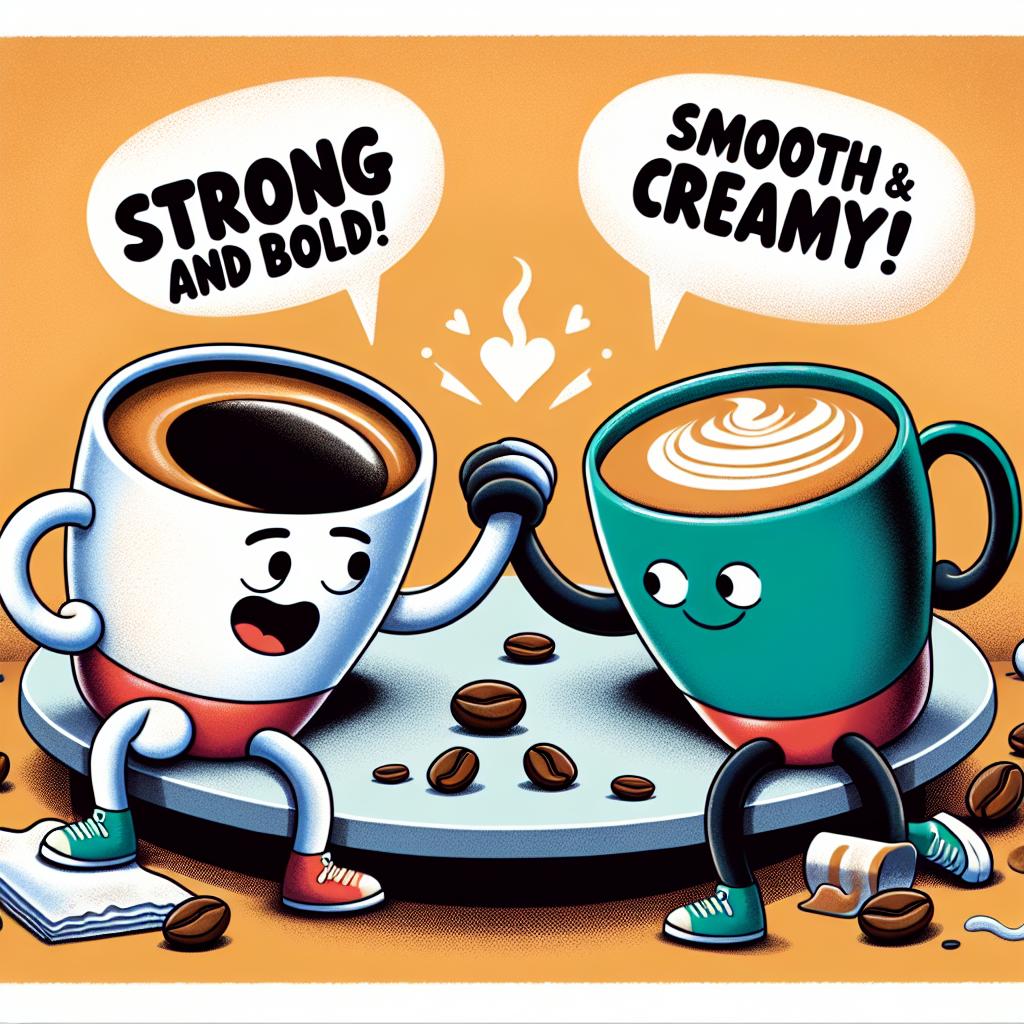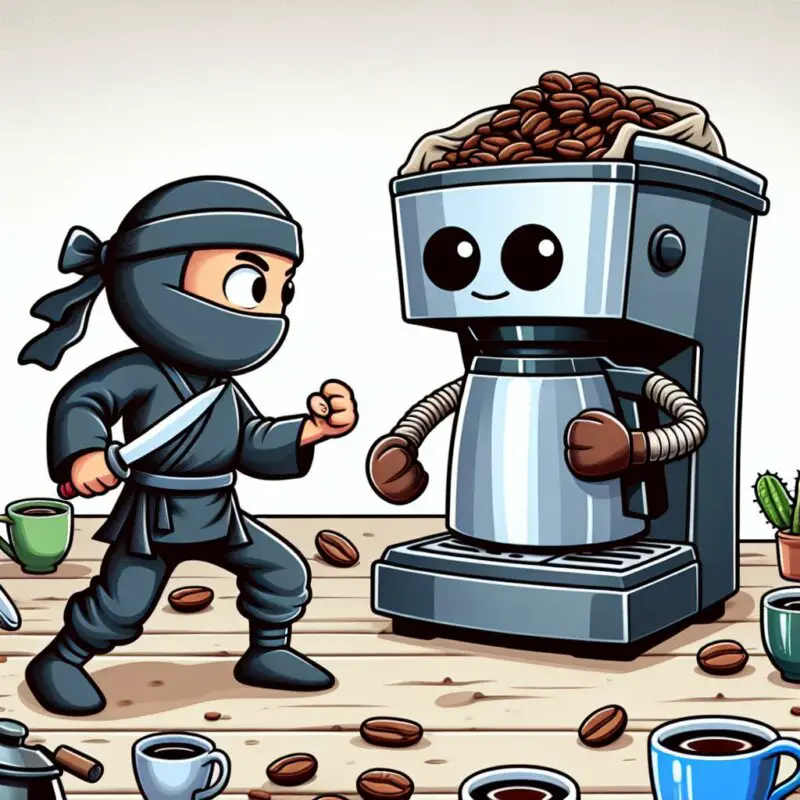This post may contain affiliate links. Please read my disclosure for more info.
Espresso shots and lattes top the coffee shop favorites list. Though both start with espresso, they’re worlds apart in taste and texture.
Let’s dive into the world of espresso and latte – what’s inside, how they taste, how they’re brewed, and their health facts. I’ll keep it brief so you can catch your barista in action, probably getting your name wrong again.
What Is an Espresso?
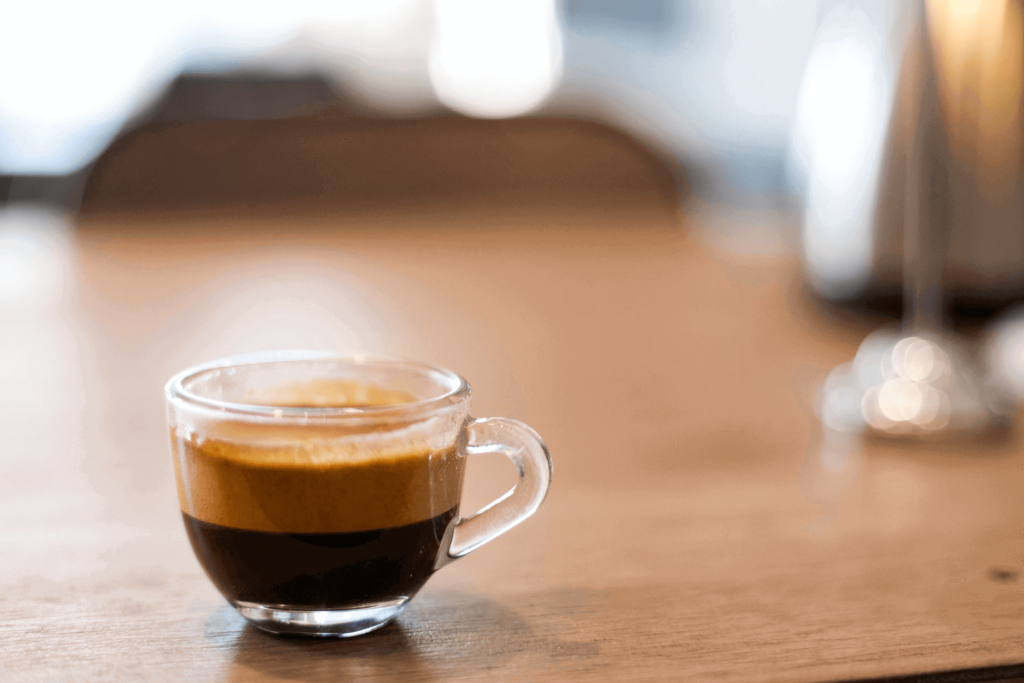
Espresso is a bold, intense coffee that’s made by forcing hot water through very fine coffee grounds. It’s pure with no extras, containing just three calories per shot. All you need for espresso are water and coffee beans.
Espresso reigns supreme in Italy and across Europe, while in the US, drip coffee takes the spotlight in cafes and restaurants. These represent two distinct ways to brew coffee: espresso uses pressure and fine grounds, whereas drip coffee does not and opts for coarser grounds.
When you step into a cafe and ask for an espresso, you’re usually handed a tiny cup with a single shot of espresso, about 1 ounce. Feeling adventurous? Go for double or triple shots – it’s the same rich espresso, just more of it. For something different, try long shots and ristretto. These are variations of a single shot, made by adjusting the amount of water for a unique taste.
What Is a Latte?
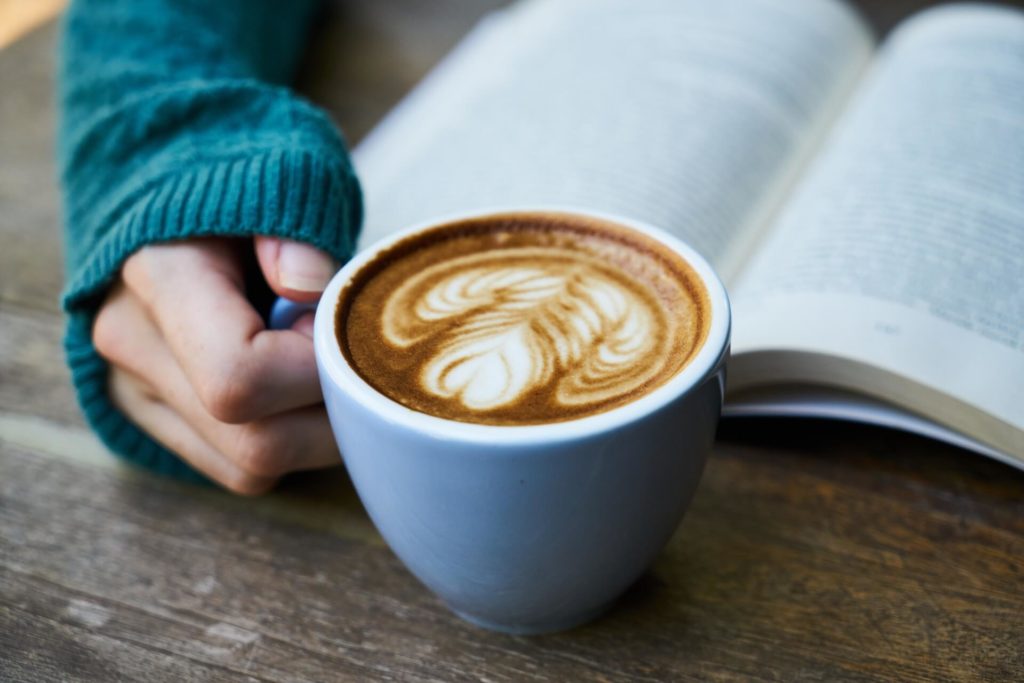
Lattes blend rich espresso with warm, steamed milk, and are finished with a light layer of milk foam. They offer a creamy taste that’s less intense than many other coffee options.
When making a latte, the mix of espresso to milk changes with the recipe, but milk is always the main ingredient. Typically, cafes serve lattes with an espresso-to-milk ratio ranging from 1:3 to 1:9. However, Starbucks goes heavy on the milk, offering ratios of 1:7 for a grande, 1:9 for a venti, and 1:11 for a tall.
Lattes are perfect for those just starting to explore coffee, thanks to their smooth and creamy taste. You’ll find them especially sweet and flavorful at popular spots like Starbucks and Dunkin, thanks to the generous dashes of syrups and other sweeteners.
Differences Between Espresso and Lattes
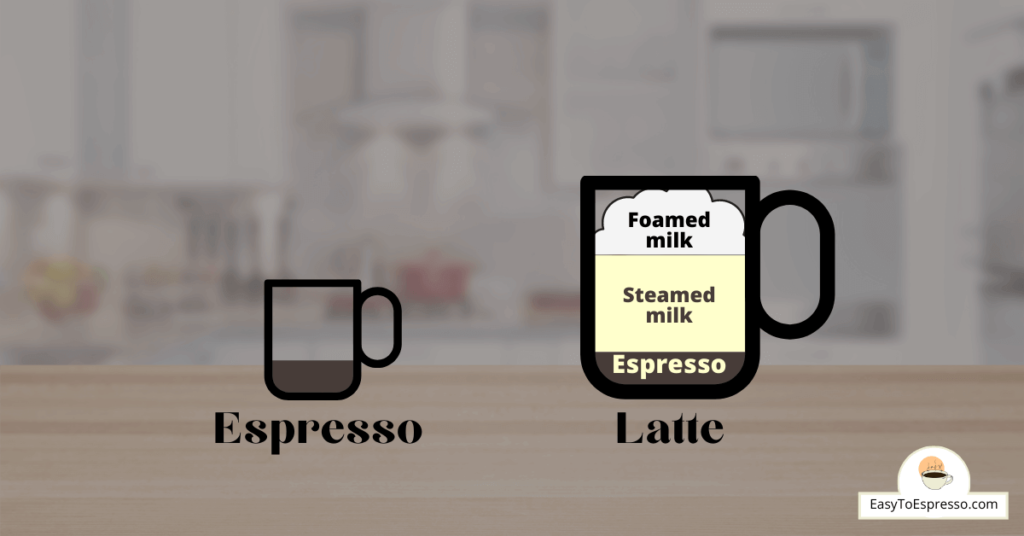
1. Lattes have milk
Espresso combines coffee beans and water to create a strong brew. For a latte, we add one more thing: milk. But first, we froth the milk until it’s creamy and foamy, then mix it with the espresso for a smooth, delightful drink.
When making a latte, you can pick any milk, but remember, some froth up nicer than others. The choice of milk changes the latte’s taste and feel. For beginners, certain milks are simpler to froth. Plus, every milk brings its own health benefits and drawbacks. It’s definitely more complex than just brewing a shot of espresso.
2. Lattes have more calories
The calories in a latte vary based on the milk type, any added flavors, and the drink’s size.
A small 12-ounce latte with low-fat milk and without any syrup has around 140 calories. But, a grande Starbucks blonde vanilla latte, using their standard 2% milk, packs 250 calories, including 60 from fat. Remember, even skim milk adds calories!
Switch up your latte with soy, almond, or hemp milk to slash calories. Yet, remember, nothing beats the low-calorie count of a straight espresso shot.
3. Espressos are smaller
Espresso shots are small but mighty, containing no milk and measuring just about 1 ounce. Go for a double, and it’s still a neat 2 ounces, or 3 for a triple. In contrast, lattes are much larger, starting at 8 ounces and can go up to a whopping 20 ounces.
When you ask for an espresso, expect it in a tiny glass, just like a shot. Lattes, on the other hand, come in big mugs. These aren’t your usual cups – they’re wider, perfect for showcasing beautiful latte art.
4. Espresso has crema
When you make an espresso shot, you’ll notice a foamy layer on top. This isn’t like your latte foam; it’s all coffee. This foam packs a flavor punch and adds a delightful aroma, giving your espresso shot a little extra texture and excitement.
Crema is delicate and disappears when milk is added. That’s why lattes lack crema, but with all the milk foam on top, you probably wouldn’t see it even if it was there.
5. Espresso can be used to make other drinks
Espresso is amazing on its own, but did you know it’s also the base for countless other coffee creations? Just by adding water, you transform it into a smooth Americano. Fancy something stronger? Mix in vodka and liqueur for a chic espresso martini. The possibilities are endless!
Liven up your lattes with flavored syrups, but remember, options are a bit limited since it’s already more complex than a simple espresso shot.
6. Lattes requires a milk frother
Making espresso at home is simpler than you think! With less than $1000, you can find a great espresso machine, or even a more affordable one if you’re on a tight budget. However, mastering these machines takes a bit of practice. For an easier option, many choose the user-friendly Nespresso Vertuo machines.
To whip up a delicious latte, a milk frother is key. Whether you’re saving or splurging, options range from simple manual frothers like the Ninja Easy Milk Frother to high-end automatic ones like the Nespresso Aeroccino 3. Plus, many espresso machines include a steam wand, perfect for frothing milk directly, so you might not need an extra gadget.
Espresso vs Latte vs Cappuccino vs Macchiato
Lattes are popular, but they’re not alone in the milk and espresso world. Lattes and cappuccinos share the same base but differ in milk quantity, with cappuccinos having less. For a minimal milk option, try a cafe macchiato.
Welcome to the start of your coffee adventure! For those craving more, I’ve put together a guide to the strongest Starbucks coffee drinks you might like. Plus, dive deeper into the world of coffee by exploring drip coffee and red-eye coffee.
If you’re dreaming of becoming a home barista, start with one essential skill. Perfecting your lattes and espressos begins with mastering how to grind coffee beans properly. It makes all the difference!
